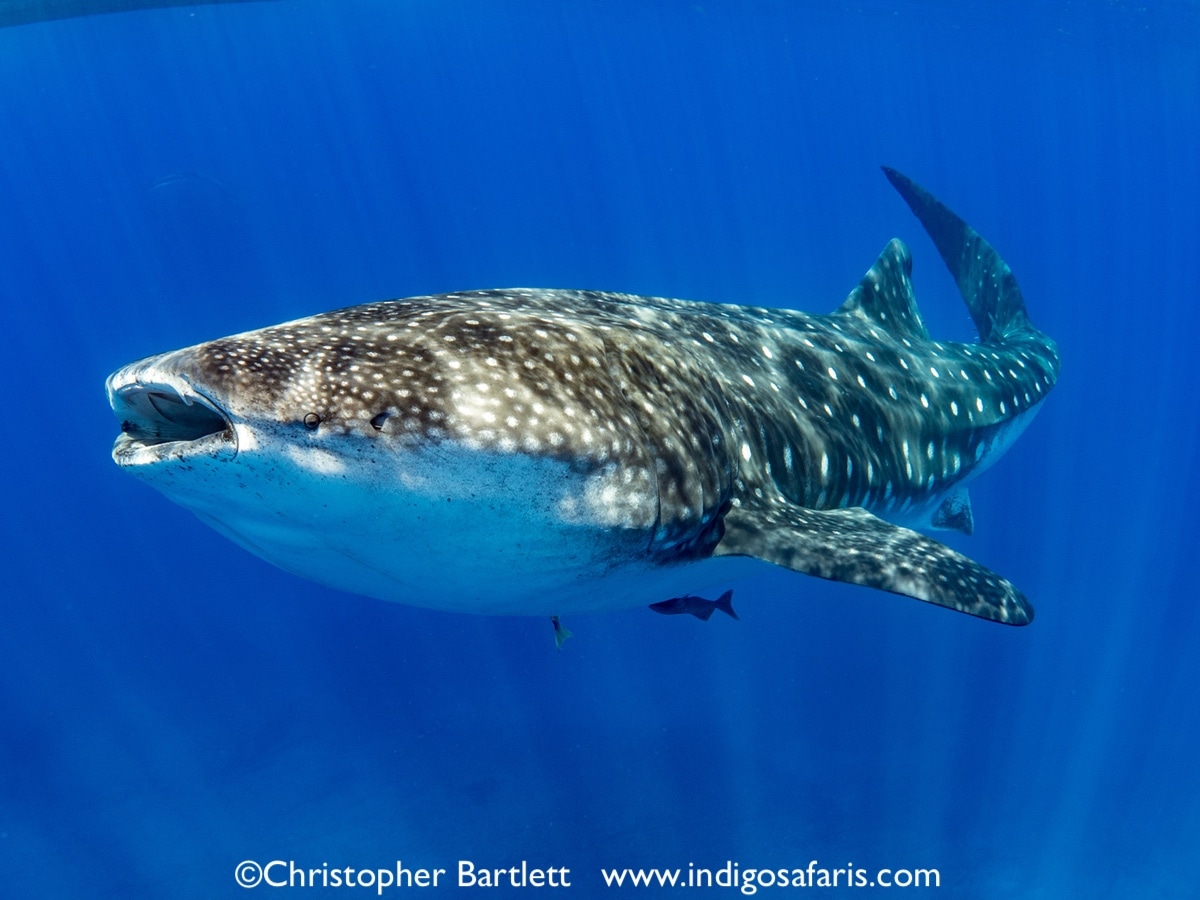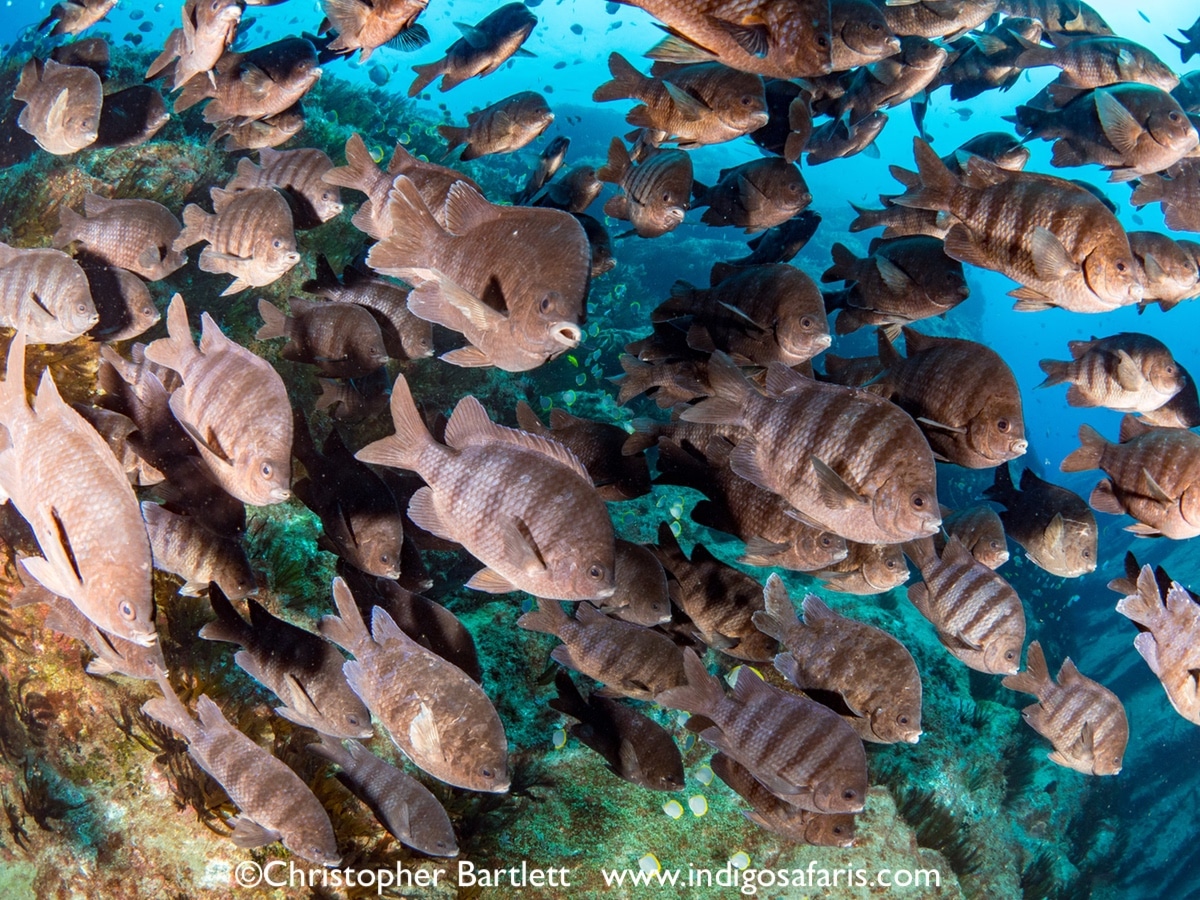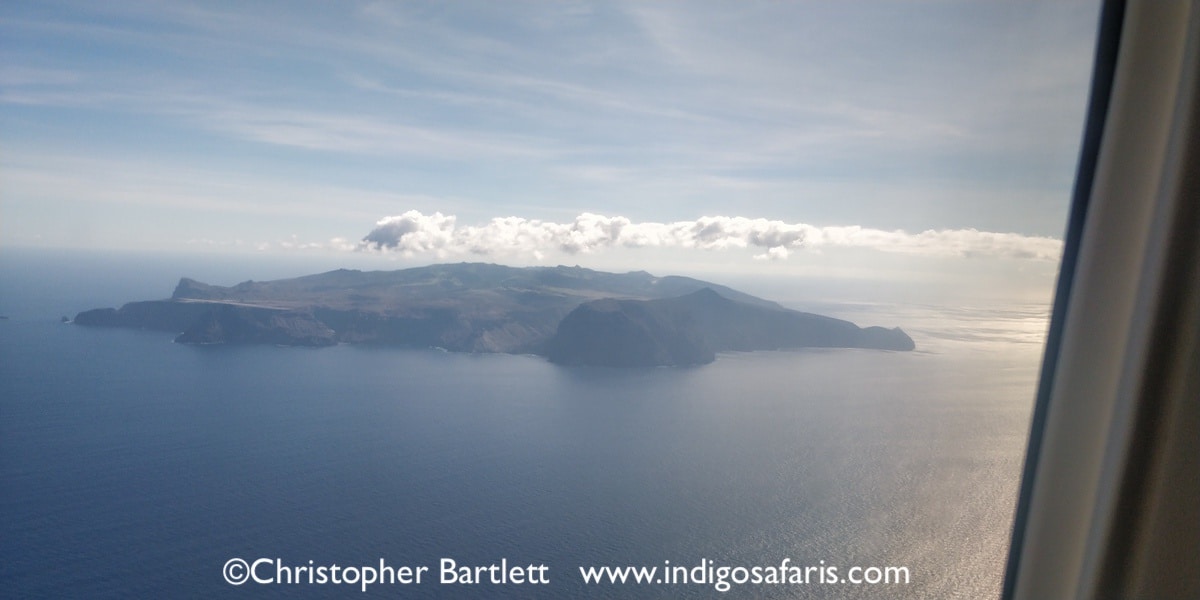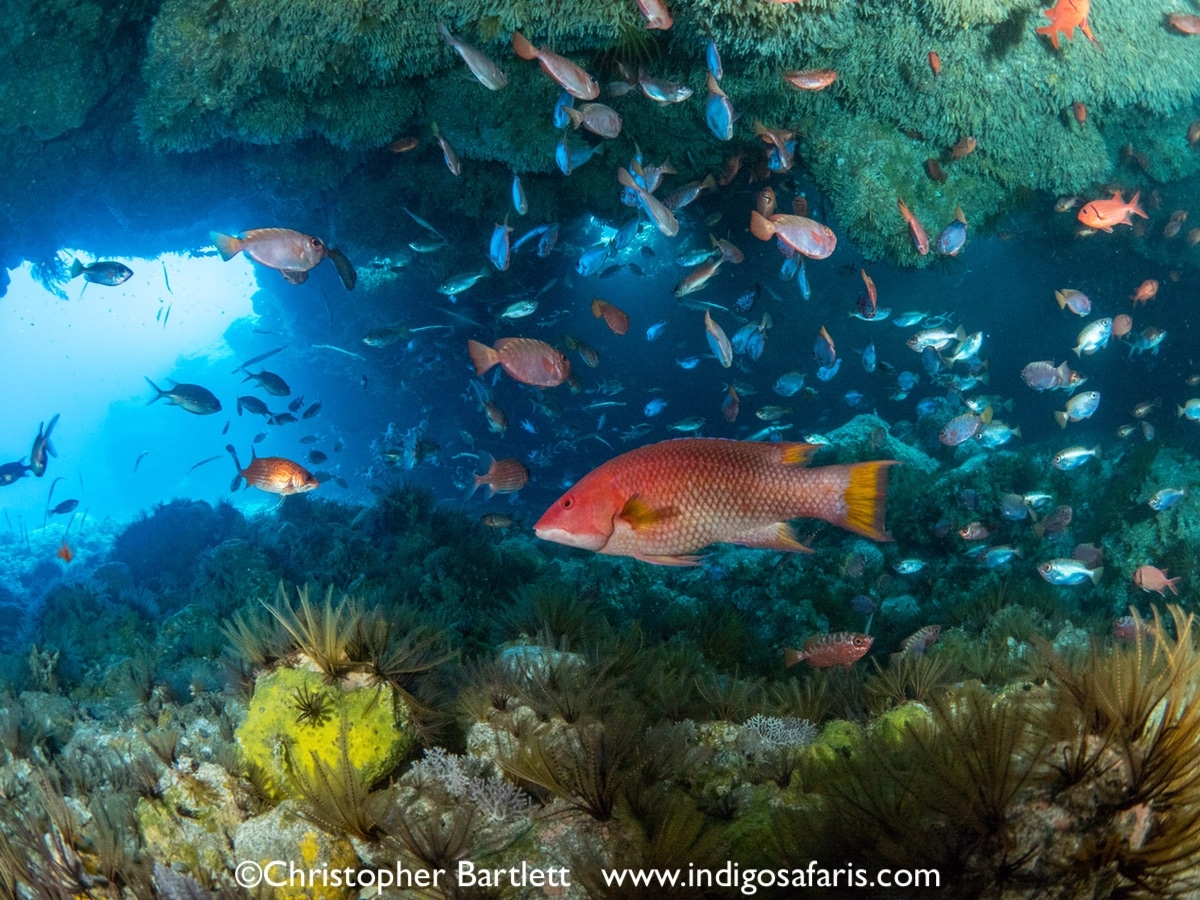News
The Saints Are Calling
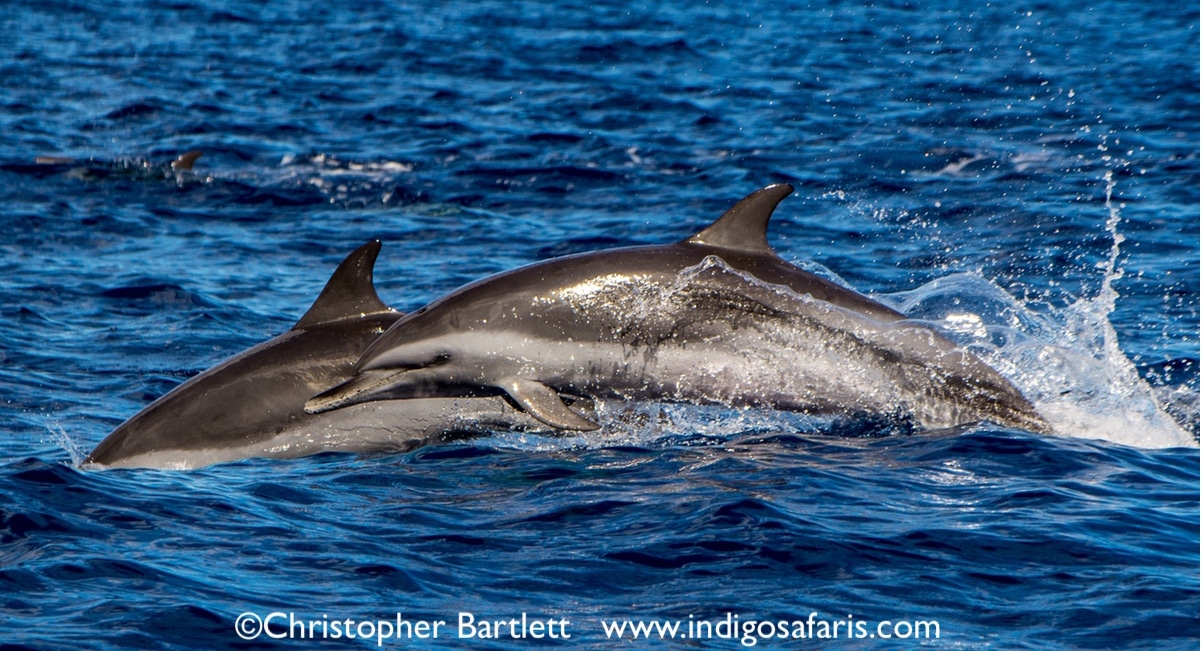
St Helena, or “The Saints” as they are locally known, is home to the only known seasonal aggregation of adult male and female whale sharks, from January to March. Previously isolated in the middle of the Atlantic Ocean with no air links, an international airport opened in October 2018, with flights once a week from South Africa. One of the remotest inhabited islands on the world should soon become a hot spot for adventurous divers looking to see the biggest whale sharks in the world at a fraction of the cost of the Galapagos. According to Indigo Safaris, this is why….
What looks like a microscopic, insignificant dot on a map, is in fact 122 km-squared of fascinating history, endemic birds and fish, and the only place in the world where male and female adult whale sharks are seen in equal numbers during an annual aggregation between January and March. Coupled with regular sightings of pregnant-looking females, this has led to recent speculation that the island may be the specie’s hitherto unfound breeding ground. Other than the Galapagos, it is the only place where you can frequently encounter adult whale sharks on scuba.
In one week in February 2018, we saw a dozen on Scuba and more snorkelling. The biggest we saw a 14-metre mamma-to-be. Multiple encounters on a dive are not uncommon, and on snorkel trips seeing a dozen or more happens regularly in peak season.
The limestone cliffs on the leeward side of the island host some beautiful caverns, also packed with fish, many of which are endemic, and make for superb photo opportunities. Lava fingers running into the sea attract Chilean devil rays and pinnacle sites are home to schools of Rainbow runner and jacks.
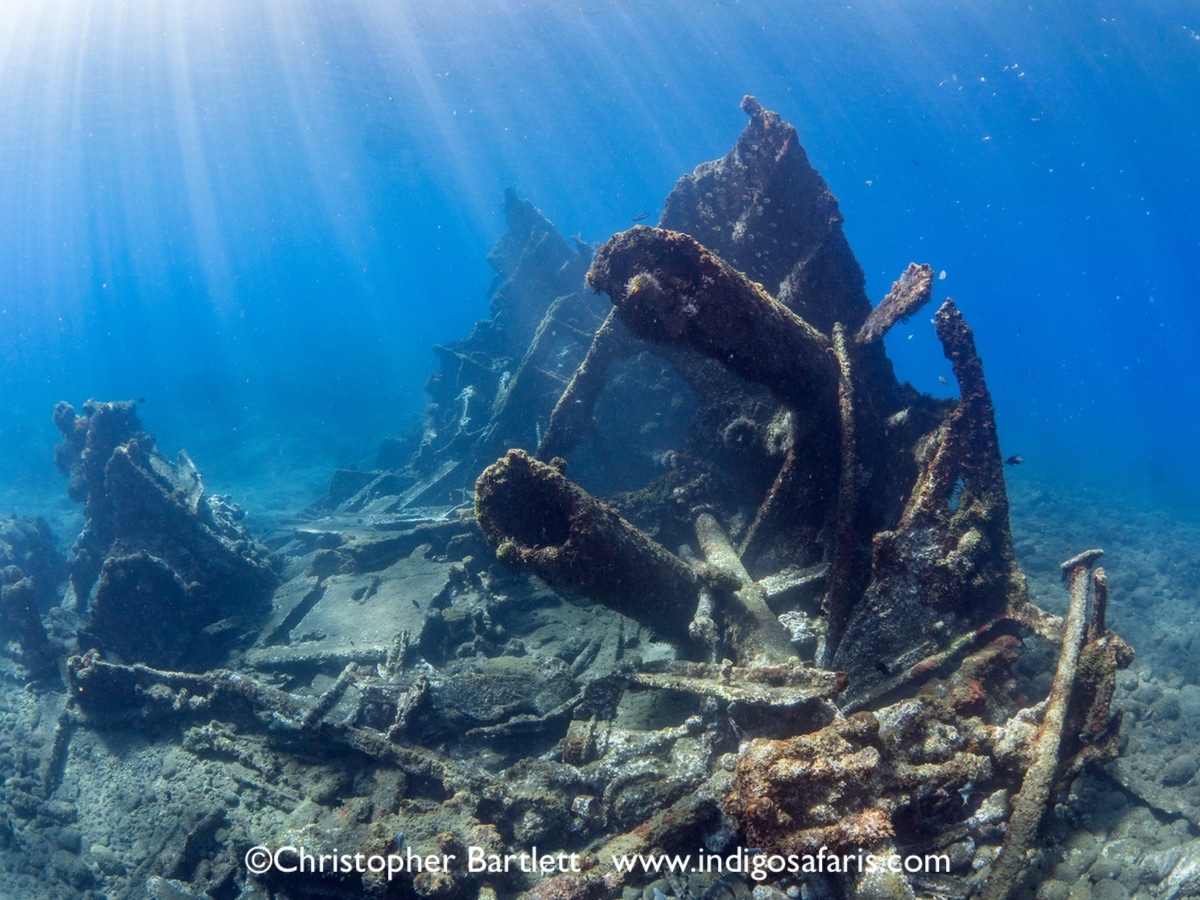
Humpback whales cruise by in winter, and three species of dolphin (Bottlenose, Spotted pantropical, and Rough-toothed) are resident year-round. There are combined dolphin and bird-watching trips, where we get close to Black noddies, brown noddies, Red-billed tropicbirds, fairy and sooty terns, petrels, brown and masked boobies and the occasional Pomarine skua. Bird enthusiasts also get excited about the abundance of elsewhere-rare Java sparrows, and the island’s endemic St. Helena plover, known as the wirebird, and the island’s own moorhen.
LAND ATTRACTIONS
St Helena’s scenery is spectacular. From the clear Atlantic waters past sheer cliffs and breath-taking rock formations, through arid red desert dotted with cacti, rolling green fields and flax-covered hillsides to a pinnacle of prehistoric cloud forest.
Probably best known as Napoleon’s last place of incarceration, albeit it in the luxuriously appointed Longwood House, and death, the island has a rich history as a key revitalling station in the middle of Atlantic. In the heyday of the East India Company and the British Empire, this fertile, volcanic island had a 3,000-strong garrison to defend it and serviced over 1000 ships a year. The island has two large forts, a castle, and a plethora of batteries and defensive positions to visit.
For the energetic, there are 22 “post box walks’ to the prominent viewpoints. At the summit of each, there is a stamp to prove you made the hike. There are also a dozen short walks that take around an hour each, from different points around the island. If that sounds too strenuous, we organise guided 4×4 tours around the island too. If all that isn’t enough, there is a quirky nine-hole golf course
Jamestown has a decent selection of restaurants and takeaways, and a couple of idiosyncratic, small bars, as well as the old Consulate to relax after a busy day. Jamestown is home to the castle, a very informative museum, the Castle Gardens full of chattering and singing Indian Myna birds, and “Jacob’s Ladder”; 699 steps rising 212 metres up to the Ladder Fort and Annie’s Restaurant.
Our favourite dive sites
Barn Cap
To the northeast of Jamestown, this is an underwater hill straight off the coast by the ridge known as The Barn. The sea can be a little choppy out here, but this is one of the sites that attracts adult whale sharks in season. The nutrients coming up from the deep feed attract these ocean giants who like to ram feed here. Over 30 whale sharks have been documented here at one time. The site is also home to large schools of the endemic “cunningfish”, a.k.a the St Helena butterflyfish, cavallies and jacks. The top of the cap is less than 10 metres deep, the bottom is beyond recreational dive depths.
Torm Ledge
To the northwest of Jamestown, Torm Ledge is a long narrow ledge running from the shallows out to sea, the bottom quickly descends to 40m, whilst the top is around 8 metres deep. It is covered in clouds of St Helena butterflyfish, an improbable number of trumpetfish, cavelly, jacks, endemic parrotfish, and sergeant-majors. It is a popular spot for whale sharks to feed, and Chilean devil rays are often spotted here.
Long Ledge
Long Ledge is a reef that stretches approximately 75 metres out to a maximum depth of 23 metres. The dive begins at 12 metres where you enter in through several archways that create a shelter for marine life of all species that are found around St Helena. This site is excellent for photography in the caverns are shafts of light play on the rocks and fish filling the caverns. As you swim along the reef, you become a part of the fish that surrounds you, and with a bit of luck, a devil ray or two will cruise by.
SS Papanui
The Papanui was a coal-carrying steam vessel that visited St Helena for water and other food supplies. On its journey to India it caught fire and ran aground in James Bay in order to save all on board. 1911 was the year that the Papanui became a monument in James Bay, lying in approximately 13 metres of water, the tiller protrudes the surface occasionally as the tides moves in and out and marks one of the most popular dives sites around St Helena for both the novice and the experienced diver. Over the years the Papanui has attracted an abundance of marine life from Lobster, endemics, and many other species of fish that greets you as you explore their habitat.
Artificial Reef
The artificial reef consist of old car structures and frame works that local owners has no further use for and has kindly gave their property to be a part of the artificial reef. The artificial reef is situated just to the west of James Bay. It’s has a maximum depth of 30 metres and has attracted all species of marine life that can be seen around the Island, including the Islands endemics namely Greenfish, Rockfish and many others. Chilean devil rays are also frequent visitors, however they are not seen on every dive.
Bedgellat
The Bedgellat was brought to the Island as a salvage ship and was sunk to the bottom in 1999; it sits on the bottom upright as if it was floating on the surface. The depth of the Bedgellat is approximately 16 metres and has become a new habitat to various species of fish. As you have a gentle swim towards the in land you approach a beautiful reef that is inhabited by many fish and other marine life and it creates a spectacle to remember.
Cavalley Point
Cavalley Point is a spectacular dive that involves swimming through archways that take you down and up to various levels as you swim through them. Its maximum depth is 18 meters where Bullseye can be seen in huge numbers, Crayfish, Cunningfish, Soldiers and Cavalley. The Cavalley are seen swimming around the entrance of the archways in great numbers.
RFA Darkdale Wreck
This Royal Fleet Auxuilary fuel tanker was torpedoed in 1941 by a German submarine on a cool dark night. The Darkdale has attracted an abundance of marine life, namely Bullseye, grouper, Cavalley, as well as several endemics to St Helena such as the. Green Fish, Cunningfish, and Rockfish. Another highlight is the descent and ascent where on many occasions tuna and barracuda are encountered and the gentle giant the whale shark in season. An early morning dive would be the best time to visit the Darkdale.
Frontier Wreck
The Frontier was a fishing vessel that came to the Island 1997 and was held in port for possession of illegal drugs. As several years passed the ship deteriorated on the surface and was sunk in 1999. 22m metres to the top of the ship as she lies on her starboard side and 28 meters to the bottom, it has now become a popular wreck dive for the advanced diver.
Where to Stay
The 4-star Mantis Hotel is a combination of restored historic buildings dating from 1774 and a new contemporary building situated in the heart of Jamestown, a few minutes’ walk from the sea front, swimming pool, museum, Jacob’s Ladder, public library, archives, shops, and bars. The buildings originally served as an officer’s barracks for the East India Company, who administered the island at the time. They served as military accommodation up until the last garrison left the island in the 1900’s. The original buildings were constructed from stone, bonded together with mud and mortar, pointed and rendered with lime which also formed the whitewash, with teak and iroko joinery and flooring. This 30-room boutique hotel has a large restaurant, the best on the island, bar and guest lounge and two outdoor terraces. All rooms have air-conditioning. Contemporary rooms start at $140 pp per night with breakfast based on 2 sharing, Heritage Rooms $150 pppn and Heritage Suites $160 pppn with breakfast based on 2 sharing.
HALF-TREE HOLLOW BUNGALOWS
Five two-bedroom units with a splendid sea and sunset view, built in 2014, located above Jamestown with a magnificent view of the coast and the ocean. Each cottage has a small lounge, kitchen and a bathroom. Each bedroom has one double bed. There is a small supermarket in Half-tree Hollow and other food shops in Jamestown. Fresh fish can be purchased in Jamestown, a five-minute drive away. We provide a rental vehicle (Ford Fiesta or similar too). From $100 per night per bungalow with vehicle. There is also a three-bedroom unit for $115 per night.
The furniture in the bungalows was made locally by the owner himself. Some have kitchen units made from local timber, or some will have at least some piece of furniture made from local timber and deck chairs on the deck allow you to watch the sun go down and treat yourself to your own sundowner drinks.
THE CONSULATE HOTEL
The Consulate Hotel is almost like a museum, with numerous reading rooms and lounges and the dining and breakfast rooms full of period pieces brought across the Atlantic from Africa. The bedrooms are cooled by moveable fans and natural ventilation. On the weekends, the street-facing rooms can be a bit noisy as two pubs are close by. Double and Twin rooms are $910 per week per person sharing, with breakfasts.
Dive operators
There are two dive operators on the island. Having been out to the islands, we chose to use Subtropic Adventures, who have been diving the islands since 2000. Owner-operator Anthony is a local with unsurpassed knowledge and experience, and his ex-pat Divemaster Paul is an experienced diver leader with many hundreds of local dives logged.
Dive boats and equipment
Diving is conducted from RIBs (Zodiacs), that can take up to 12 clients. Cylinders are steel 12-litres, with valves that can take either DIN or A-clamp regulators. The boats have an oxygen and first-aid kit in boards. Rental equipment is mainly Scubapro, wetsuits are 5mm.
Cost
Dives cost $45 per dive, with cylinder, weights and weight belt.
Escorted trips
Diving and adventure travel specialists Indigo Safaris have set up two escorted weeks in both 2019 and 2020. One week each year is in the self-catering bungalows at Half-Tree Hollow and other at the Mantis Hotel.
You can find the dates and rates by clicking here.
News
Book Review: Fire on Monroe Bravo by Fred Lockwood

Fire on Monroe Bravo is the latest book in the Jack Collier series by Fred Lockwood. Our story begins with our lead characters, Jack and Sandro, owners of Marine Salvage & Investigation Company, arriving on the Monroe Bravo Oil & Gas Platform in the North Sea. Having secured a contract for their vessel the MV Stavanger to act as support ship to the platform for TransGlobal Oil, our protagonists are on a celebratory visit.
However almost as soon as they arrive a series of explosions rock the platform, causing huge damage, loss of life and the very real danger of a massive human, ecological and financial disaster.

As the danger mounts for both our heroes and the surviving workers, Jack and Sandro will have to escape the inferno, all while trying to save the platform and the men still trapped unable to help themselves.
The disaster sets the scene for the unfolding story lines following the fate of the platform and our main characters, the police investigation into a suspected terrorist act and the actions of TransGlobal Oil as they attempt to navigate the pubic outcry and financial repercussions.
In his eighth book, Fire on Monroe Bravo, Fred Lockwood delivers an explosive thriller, with plenty of above and in-water drama, and our heroes fighting for survival, what more can you ask for?
We thoroughly recommend this read and look forward to the next in the series. For more information about his book series, you can check out the reviews of his previous books here on Scubaverse.
- Title: Fire On Monroe Bravo
- Author: Fred Lockwood
- ISBN: 979-8325324536
Available in a paperback version and for Kindle from Amazon and book stores.
Blogs
Alonissos: The complete diving destination (Part 1)

In June we were incredibly fortunate to be invited to dive in Alonissos, a small Greek Island in the Sporades island chain located in the North Aegean Sea. While I have long been a big fan of the Greek Islands as a great holiday destination, I had not had the opportunity to do any diving on previous visits and Mike and I were extremely excited to see what Alonissos had to offer both above and below the surface!

The Sporades are easily accessible via the airport in Skiathos (the first island in the chain), which is served by Jet2 flights from all major UK airports from May through October. Numerous ferries and charter boats make island hopping from Skiathos Town a breeze. After an hour boat ride, the picturesque port of Patitiri was a wonderful introduction to Alonissos, where we were met by our gracious hosts Kostas of Albedo Travel and Dias of Alonissos Triton Dive Center. Mike and I were delighted to be staying at the Paradise Hotel, aptly named for its stunning views over the sea and great location for walking to the waterfront.

Alonissos is beautifully situated in the National Marine Park of Alonissos and the Northern Sporades, the largest marine protected area in Europe. The surrounding seas offer fabulous marine life, including incredibly rare species such as the Mediterranean monk seal. They boast deep walls covered in gorgonians and sponges, stunning topography with caverns, swimthroughs and pinnacles, and the first accessible ancient shipwreck from 500BC!

In locations where historical sites have been reported, the waters are largely restricted, but with collaboration between government, underwater archeologists and dive centres, incredible underwater museums are being created for a truly unique diving experience. Alonissos is home to the first of these, the Ancient Shipwreck of Peristera Accessible Underwater Archeological Site. The chance to dive into history (along with reports of healthy reef life and amazing underwater topography) meant Mike and I were keen to get in the water.

Our introduction to the diving around Alonissos was at the Agios Georgios Pinnacles, in the channel between Alonissos and Skopelos. This fantastic site was named “The Chimney,’ and proved to have a huge amount to see. We got to a decent depth here (over 25m), and marvelled at a colourful reef wall with a wonderful swim through whose rocky walls were absolutely covered with life. As well as brilliant topography there was no shortage of macro life here. We saw numerous nudibranchs, five different species in total. The second dive at Mourtias reef nearby was a shallower dive along a nice wall with lots of crevices. Several moray eels and grouper called this site home. We enjoyed looking in the crevices for lobster and smaller benthic life, such as cup corals and tunicates.

Our itinerary allowed us two dives a day with afternoons left to explore the island with our hire car and evenings to enjoy the famous Greek hospitality. This proved to be a lovely mix of in-water and land based diversions.

The next days diving to the Gorgonian Gardens and Triton’s Cave was to be even better! These two stunning sites are nothing short of fabulous. The Gorgonian Gardens was a deep wall near to the Agios Georgios islands. The ever-present currents in this deep channel meant that the sea life was amazing … the namesake Gorgonian sea fans dotted the wall at a depth of 30 to 50 meters, getting ever larger the deeper we went. Above 30m was by no means less beautiful, with sponges, corals, scorpionfish, moray eels and some rare and colourful nudibranchs.

The second shallower dive of the day was to Triton’s Cave or the Cavern of Skopelos, on the east side of that island. The spectacular rock formations had wild striations both above and below the water making a truly epic topography. The cavern entrance was at 14m, and big enough for a buddy pair, winding up to 6m and passing two beautiful windows out into the blue. Emerging from the cavern, the light at the shallower depths and the incredible rock formations made for a fantastic gentle swimming safety stop and we all surfaced by the boat with massive grins.

Check out our next blog :Alonissos: The complete diving destination (Part 2)” to hear about our amazing dive on the 2500 year old Peristera Wreck!
Thanks to:
Alonissos Triton Dive Center https://bestdivingingreece.com/
Albedo Travel https://alonissosholidays.com/activities/
Paradise Hotel https://paradise-hotel.gr/
Alonissos Municipality https://alonissos.gr/en/
-

 Blogs2 months ago
Blogs2 months agoDiving With… Nico, Ocean Earth Travels, Indonesia
-

 News1 month ago
News1 month agoMurex Bangka Announce New Oceanfront Cottages & Beachfront Dining
-

 Blogs2 months ago
Blogs2 months agoA new idea in freediving from RAID
-

 Marine Life & Conservation1 month ago
Marine Life & Conservation1 month agoIceland issue millionaire whale hunter a licence to murder 128 vulnerable fin whales
-

 Marine Life & Conservation2 months ago
Marine Life & Conservation2 months agoThe Shark Trust Great Shark Snapshot is back
-

 News3 months ago
News3 months agoCharting New Waters; NovoScuba Goes Global with the Launch of their Revolutionary Dive Training Agency!
-

 Gear News1 month ago
Gear News1 month agoNew Suunto Ocean – a dive computer and GPS sports watch in one for adventures below and above the surface
-

 Marine Life & Conservation Blogs2 months ago
Marine Life & Conservation Blogs2 months agoBook Review: Plankton


